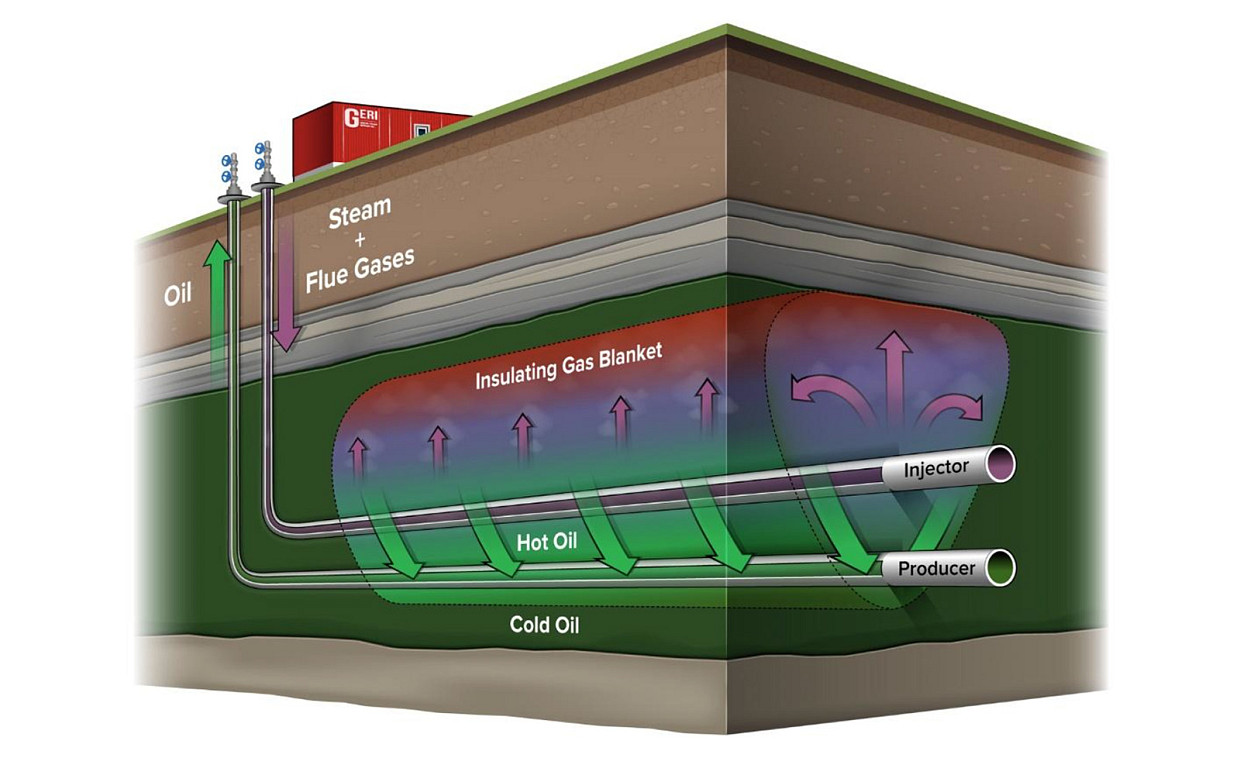
Most enhanced heavy oil recovery technologies, such as water, polymer, CO2 or solvent flooding aren't commercially viable because they’re either too costly or only moderately effective.

Reducing oil viscosity by adding heat.
Reducing oil viscosity by dissolving CO₂.
Re-pressurizing the reservoir and replenishing its drive mechanism by injecting non-condensable flue gases.
Reducing heat loss to the overburden by creating an insulating blanket of non-condensable flue gases at the top of the reservoir.
Improving sweep efficiency with simultaneous gas override and water underride sweep.
GERI’s portable DCSG co-injector can be deployed in a variety of different applications. The ideal application for a heavy oil field depends on reservoir properties, existing infrastructure, and customer needs.
GERI’s co-injector performs an enhanced version of Cyclic Steam Stimulation (CSS), adding heat while also rapidly re-pressurizing the reservoir by co-injecting flue gases.
Steam and flue gases are injected into a well for weeks to months, followed by a brief soaking period, and then the same well is converted into a producing well to produce the stimulated oil.
CSS with flue gases is an ideal solution for depleted heavy oil wells with nearly any wellbore design (multilateral, horizontal, vertical) placed comfortably above a formation water leg.
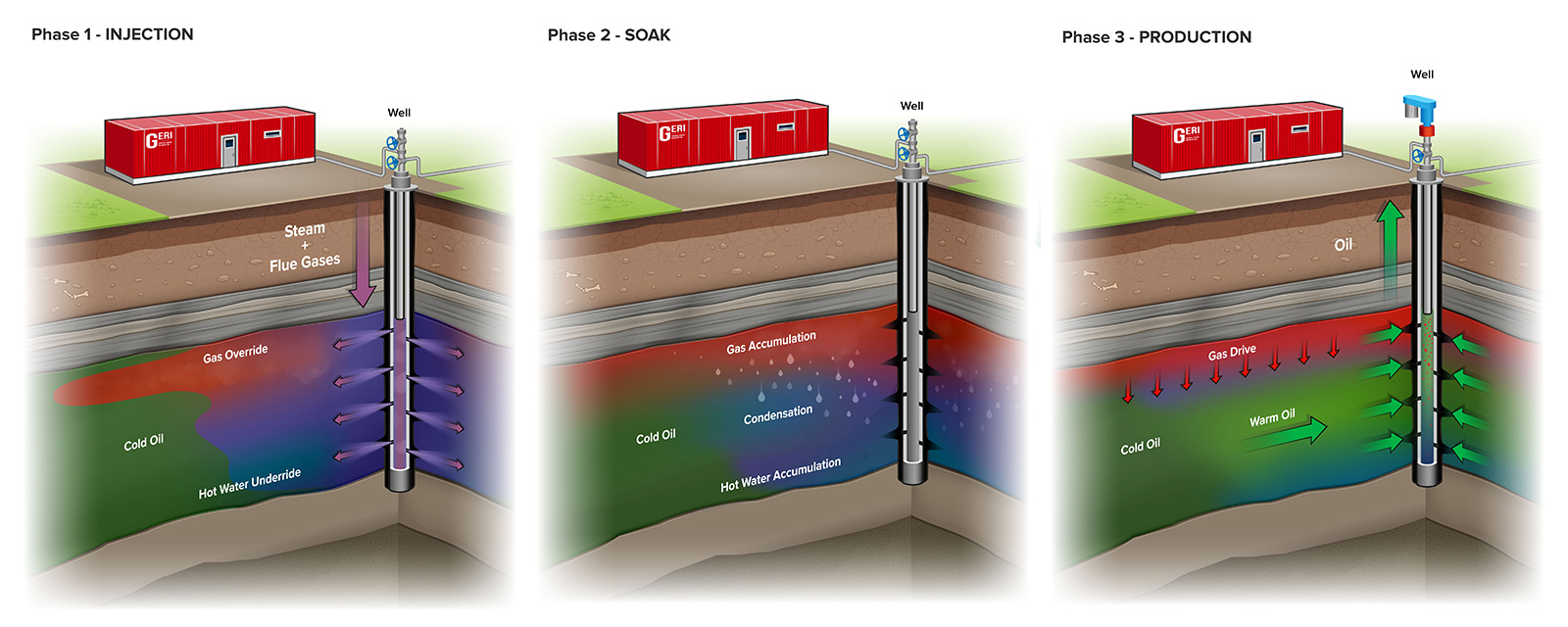
Cyclic hot water with flue gas stimulation is a cost-effective solution for enhancing recovery in depleted heavy oil wells with nearly any wellbore design (multilateral, horizontal, vertical, thermal, or non-thermal cased) placed comfortably above a formation water leg.
In particular, it is a unique solution for reservoirs susceptible to damage due to fresh-water sensitive clays. Produced water is much cheaper than using boiler quality water and offers additional savings where water disposal costs are high.
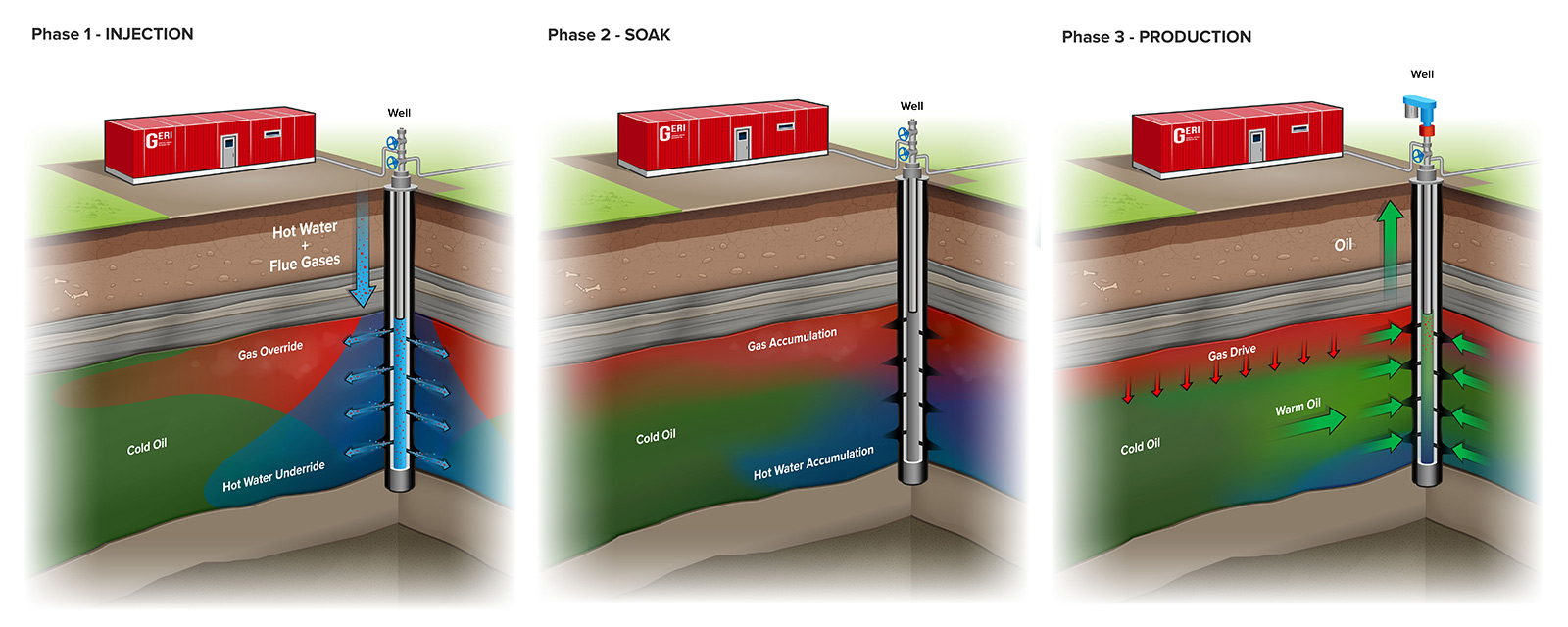
Steam flooding with flue gases offers the ultimate solution for enhancing depleted heavy oil fields drilled with a suitable line-drive or spot pattern.
Maximum heat and gas rates are injected into a well and oil is produced from offsetting wells. Optimal sweep efficiency is achieved by steam and gas working together to scour residual oil left behind from primary production. As steam migrates along the top of the reservoir, it condenses further away from the injection well, releasing the heat of condensation, further improving sweep efficiency.
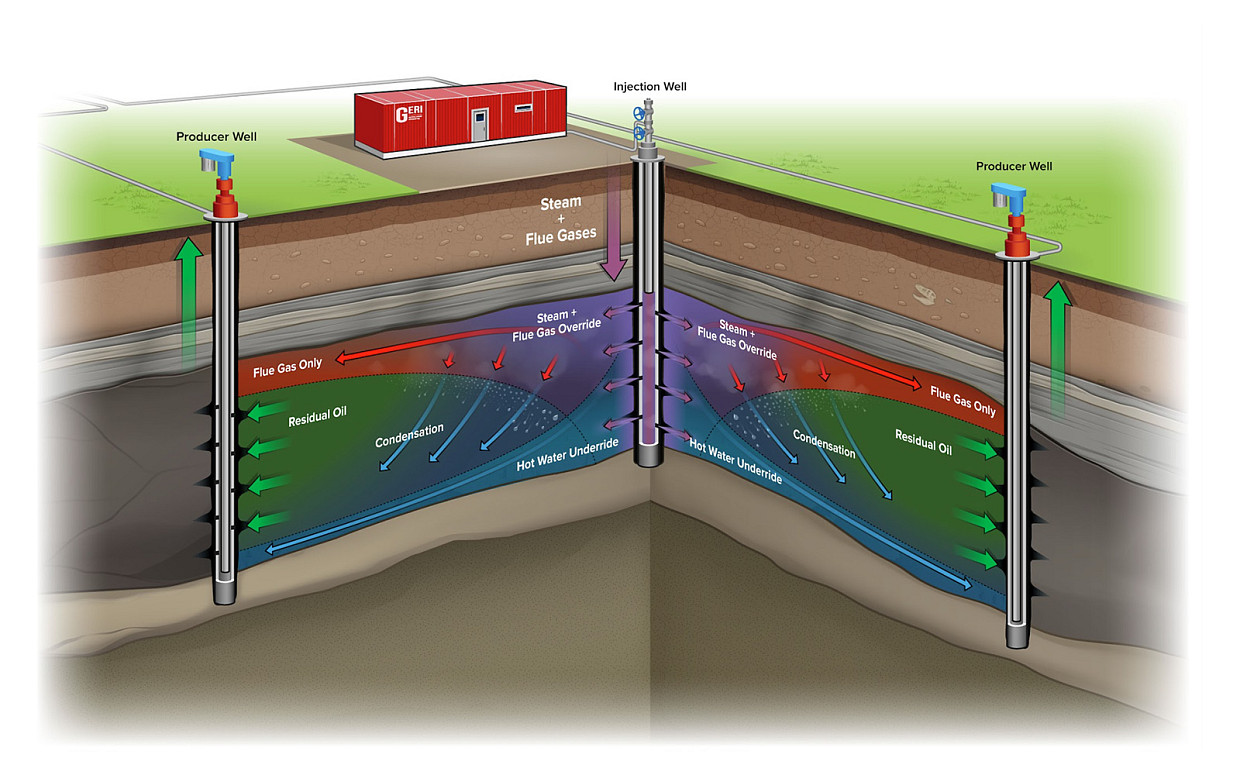
Hot water flooding with flue gas is a cost-effective solution for enhancing recovery in depleted heavy oil wells with nearly any wellbore design (multilateral, horizontal, vertical, thermal, or non-thermal cased) placed comfortably above a formation water leg.
In particular, it is a unique solution for reservoirs susceptible to damage due to fresh-water sensitive clays. Produced water is much cheaper than using boiler quality water and offers additional savings where water disposal costs are high.
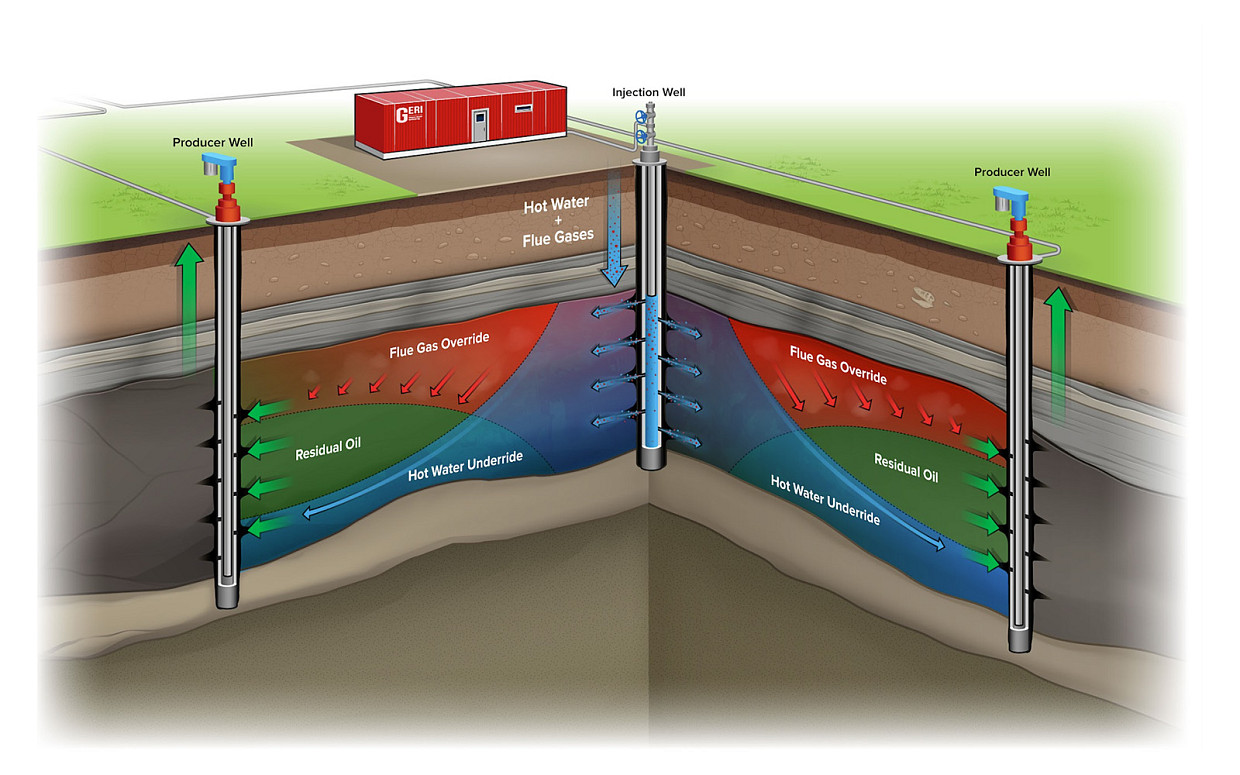
Within Alberta, a large resource of pressure depleted Gas-Over-Bitumen (GOB) reservoirs remain inactive due to a lack of economic recovery methods. Innovative recovery pilots have attempted to prove economic recovery of the oil (e.g. gas-cap fire flood, straight flue gas injection, and electrical conductive heating), without larger scale follow-up development.
Because of the extremely high viscosity of bitumen, and generally low reservoir pressure, adding heat and re-pressurization are essential to recovering the oil. GERI’s co-injector delivers temperature and pressure with low greenhouse gases and offers operational benefits to previous GOB pilot projects.
Increasingly, thermal SAGD operations are co-injecting non-condensable gases (NCGs) into SAGD reservoirs for pressure maintenance, and to insulate the steam chamber from the overburden.
GERI co-injects NCGs (N2 and CO2), along with steam, as an alternative to injecting costly natural gas, offering a large cost saving opportunity to SAGD operators. The NCG injection stream is 85% N2, which is less soluble in bitumen than natural gas. This allows the N2 to migrate to the top of the reservoir without being dissolved into the oil, resulting in greater retention of injected gases in the reservoir.
